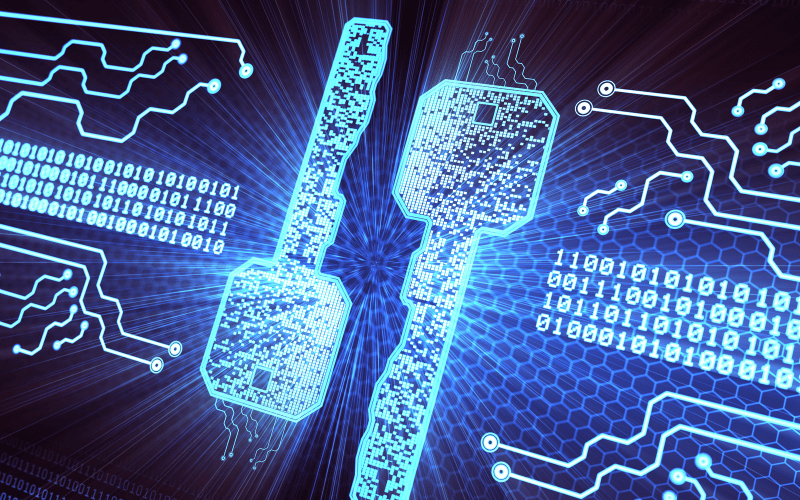Why is Passwordless Auth More Secure?
How does passwordless auth work?
Passwordless auth is a method of authentication that does not rely on traditional passwords. Instead, it uses alternative forms of identification to verify a user's identity. Here are some examples of how passwordless authentication can work:
- Biometric authentication: Biometric authentication uses a user's unique physical characteristics, such as fingerprints, facial recognition, or iris scans, to verify their identity. A user can enroll their biometric data with a service, and then use it to authenticate themselves in the future.
- Token-based authentication: Token-based authentication involves using a physical device, such as a smart card or USB key, to authenticate a user. The user inserts the device into a computer or mobile device to prove their identity.
- Mobile-based authentication: Mobile-based authentication involves using a mobile device, such as a smartphone, to authenticate a user. This can be done through a mobile app that generates a one-time code, or through biometric authentication such as facial recognition or fingerprint scanning.
- Certificate-based authentication: Certificate-based authentication involves using digital certificates to verify a user's identity. The user obtains a certificate from a certificate authority, and then uses it to authenticate themselves to a service.
In each of these examples, the authentication process does not involve a traditional password. Instead, it relies on a unique identifier that is difficult to replicate or fake, such as a fingerprint or a digital certificate. This makes passwordless authentication more secure than traditional password-based authentication.
Why is passwordless auth more secure?
Passwordless auth is considered more secure for several reasons:
- No need to remember or store passwords: Passwords can be forgotten, stolen, or compromised. Passwordless auth eliminates the need for users to remember passwords, reducing the likelihood of password-related security breaches.
- Stronger authentication methods: Passwordless auth typically uses stronger authentication methods, such as biometrics, hardware tokens, or cryptographic keys, which are more difficult to fake or steal.
- Reduced risk of phishing attacks: Passwords can be easily phished by attackers who trick users into revealing their passwords. Passwordless auth eliminates this risk by removing the password as a potential target.
- Easier management and scalability: Passwords can be difficult to manage and scale, especially in large organizations with multiple users and systems.
Passwordless auth simplifies management and can be easily scaled to accommodate growing numbers of users and systems. Overall, passwordless network authentication offers a more secure and user-friendly alternative to traditional password-based authentication methods.
How does passwordless auth reduce the risk of phishing attacks?
Passwordless auth reduces the risk of phishing attacks in several ways:
- No password to steal: In a passwordless auth system, there is no password for attackers to steal. This eliminates the risk of attackers using phishing techniques to steal passwords from users.
- Stronger authentication methods: Passwordless auth typically uses stronger authentication methods, such as biometrics or cryptographic keys, which are more difficult to fake or steal. This makes it more difficult for attackers to bypass authentication and gain access to systems or data.
- User awareness: Passwordless auth systems often require user interaction, such as the use of a smartphone or other device to complete authentication. This increases user awareness of the authentication process and can make it more difficult for attackers to trick users into revealing sensitive information.
- Two-factor authentication: Many passwordless auth systems use two-factor authentication, which requires users to provide additional authentication factors beyond just a password. This makes it more difficult for attackers to bypass authentication, even if they are able to steal one of the authentication factors.
Overall, passwordless authentication reduces the risk of phishing attacks by eliminating the password as a potential target for attackers, using stronger authentication methods, increasing user awareness of the authentication process, and requiring multiple factors for authentication.
Why is passwordless auth more scalable than relying on passwords?
Passwordless auth is more scalable than relying on passwords for several reasons:
- Reduced password management overhead: In a password-based authentication system, managing passwords can be a significant overhead for IT staff. This includes tasks such as resetting passwords, enforcing password policies, and managing password databases. Passwordless authentication eliminates many of these tasks, reducing the management overhead.
- Easier deployment: Passwordless auth systems can be easier to deploy than password-based systems. For example, many passwordless systems use standards-based protocols such as OAuth or OpenID Connect, which can be integrated with existing systems more easily than custom password-based authentication systems.
- User-friendly: Passwordless authentication systems can be more user-friendly than password-based systems. Passwordless systems often use biometric or token-based authentication methods that are faster and easier for users to use than typing in a password.
- Reduced risk of password-related security breaches: Passwords can be weak, easily guessed, and vulnerable to hacking attacks. By eliminating passwords, passwordless authentication reduces the risk of password-related security breaches.
Overall, passwordless auth is more scalable than relying on passwords because it reduces the management overhead, is easier to deploy, is more user-friendly, and reduces the risk of password-related security breaches. This makes it a more attractive option for large organizations with complex authentication requirements.
What are the disadvantages of passwordless auth?
While passwordless auth has many advantages, there are also some disadvantages to consider:
- Limited device compatibility: Some passwordless auth methods, such as biometric authentication, require specialized hardware and may not be compatible with all devices. For example, some older devices may not support facial recognition or fingerprint scanning.
- Privacy concerns: Some users may be uncomfortable with the use of biometric data for authentication, as it raises privacy concerns about the collection and use of personal data. In addition, token-based authentication may be vulnerable to physical theft or loss of the token device.
- Higher implementation costs: Passwordless auth methods may require specialized hardware or software, which can increase implementation costs for organizations. For example, deploying a system that uses biometric authentication may require additional hardware or software development.
- Complexity: Some passwordless authentication methods, such as certificate-based authentication, can be more complex to set up and manage than traditional password-based systems. This can make it more difficult for organizations to deploy and manage the authentication system.
- Single point of failure: Passwordless authentication systems rely on a single authentication method, which can be a single point of failure. If a user's biometric data is compromised or their token device is lost or stolen, they may be unable to authenticate themselves.
Overall, while passwordless authentication has many advantages over traditional password-based systems, organizations should carefully consider the potential disadvantages and choose the authentication method that best meets their security and usability needs.








